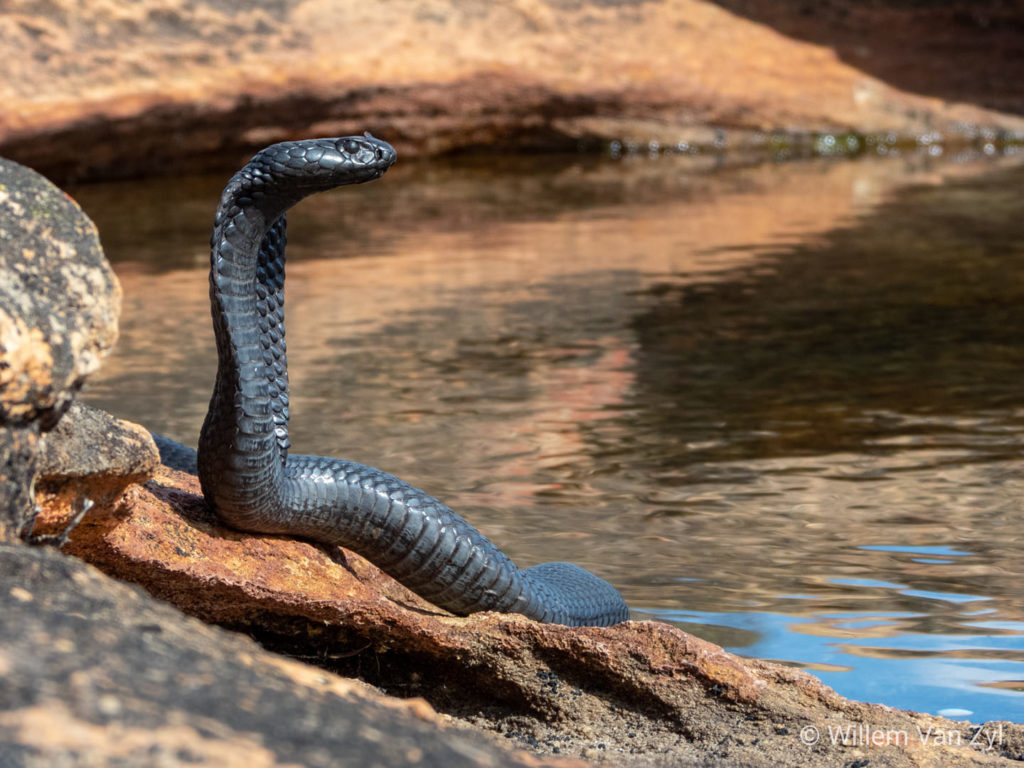A Black Spitting Cobra made the long journey from the Cederberg to Hermanus after it slithered into an elderly woman’s car. Luckily, local snake catcher and documentarian Mathieu Van Goethem was able to return the snake to its home.
The woman called a local snake catcher after discovering the snake in her car. The snake catcher then contacted Goethem, who was filming a documentary on venomous snakes in Africa. Goethem made the trip from Potchestroom to Hermanus to pick the snake up and return it back to the Cederberg.
Fellow snake catcher Willem Van Zyl was also present and captured this video of the snake.
The Black Spitting Cobra is generally seen in Namaqualand and east from Cape Town and southern Namibia. They are typically active during the day.
While they may appear threatening, they’re said to be shy and bites are extremely rare. However, their venom, which they can spit, can be incredibly harmful and cause severe pain, swelling and tissue damage.
Black Spitting Cobras are classified as very dangerous, and hikers are warned to exercise caution around this snake.
The African Snakebite Institute advises the following if you see a snake:
– Leave snakes alone and treat them with respect
– Do not handle even small snakes. Young venomous snakes are just as dangerous as the adults.
– Never tamper with a seemingly dead snake, as many play dead when scared or threatened, only to strike out the moment an opportunity arises.
– Wear boots and thick trousers or jeans if you spend a great deal of time outdoors. Hunters, hikers, birders and fishermen should consider wearing snake gaiters that protect the lower leg.
– Step onto logs and rocks and never over them. Snakes often sun themselves while partially concealed under a log or rock.
– Never put your hands in out-of- sight places, especially when mountain climbing.
– Do not try to kill or catch a snake if you come across one. Throwing rocks or shooting at a snake is looking for trouble. Also do not attempt to catch a snake with braai tongs or pin it and grab it behind the head. Some snakes, such as the Stiletto Snake, cannot be held safely behind the head and you will certainly get bitten if you try.
– In case of a snakebite emergency, do not attempt to catch or kill the snake – rather take a photograph from a safe distance, to assist with identification.
If you are bitten by a snake, please use one of these hotlines:
Netcare Ambulance 082911
ER24 Ambulance 084124
Poison Information Helpline 0861 555 777
African Snakebite Institute +27 82 494 2039
Dr P.J.C. Buys (Namibia) +264 81 127 5109
You can also download an app that will connect you with available snake catchers in your area HERE.
For more pictures, visit Matvangeo and WYZNature & Wildife Photography

